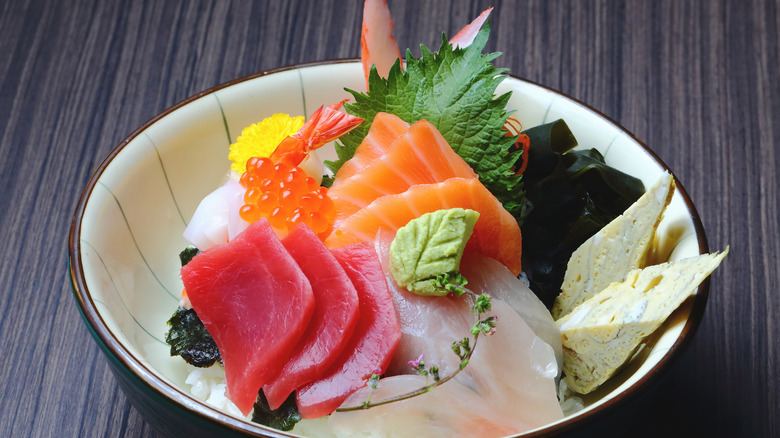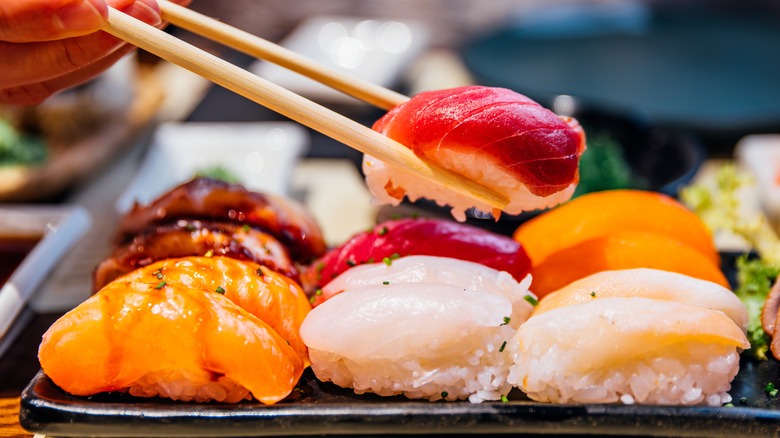The Difference Between Sushi And Sashimi Is All In The Rice
Often grouped together for both being Japanese classics and sharing a core component, sushi and sashimi certainly pair well on a plate. However, one essential ingredient keeps these two delicacies apart: rice. While sushi contains lightly-vinegared rice, sashimi does not. Sashimi can't even be categorized as a type of sushi due to its lack of rice, while sushi is named for its lightly sour taste achieved from flavoring the rice with vinegar. Although sushi most commonly uses fish or even raw fish, as well as nori seaweed, sushi can also star beef, chicken, tofu, vegetables, and cooked seafood. Some of the most popular sushi variations include tuna, squid, salmon, and octopus with favored rolls ranging from spicy tuna rolls to dragon rolls, which are served with eel and crab.
The most popular form of sashimi involves thinly sliced raw fish, frequently salmon or tuna. In fact, sashimi is named for the slicing techniques used to create the lengthwise cuts. Like sushi, sashimi can be crafted out of various types of meat and seafood, both raw and cooked. Although today it may be seen as a gourmet choice, sashimi was initially invented out of necessity. The raw fish was preserved with salt, pickled, or fermented to minimize spoilage. Eventually it caught on as a delicacy. Similarly, fermented rice was historically used to help preserve raw fish for sushi for longer periods.
What about nigiri, maki, and gimbap?
Sushi and sashimi are frequently bundled together, but where do nigiri, maki, and gimbap fit in? Nigiri and maki are both forms of sushi. Interestingly, nigiri is sometimes viewed as a sushi and sashimi crossover, since its final form involves vinegar rice and thinly-sliced fish or meat. Nigiri usually calls for a smooth rectangle of vinegared rice, often topped with a narrow slice of cooked or raw seafood. Meanwhile, maki look like mini sushi rolls, perfect for a light snack or more minimal serving. Other than its smaller size, its outer layer of seaweed helps define this bite-sized roll.
Gimbap shares a very similar appearance to sushi, although it is typically filled with cooked meats, imitation crab, vegetables, and even cheese. It also originates from Korea, while sushi and sashimi are historically from China. However, Japan is widely credited with introducing sushi to the western world and nowadays is often better known for sushi than other culinary traditions.
If all this talk about sushi is getting you hungry, try making some sushi from scratch at home — it's simpler than you might imagine. Although it's common to make mistakes when trying out a new recipe, it's easy to make homemade sushi so long as your kitchen is stocked with the right tools and ingredients. This means sushi-grade fish (assuming you're opting for a raw take) and a bamboo sushi roller. As for rice, a rice cooker is the most straightforward method (plus, rice cookers excel in cooking more than just rice).

